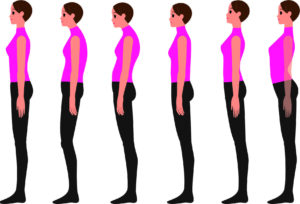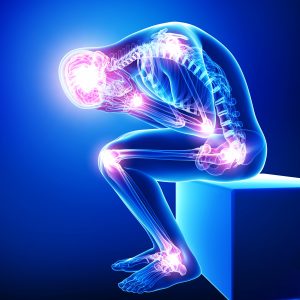Massage Therapy & Chronic Pain Series - Part 3
By Sarah Robson, RMT
First Posted March 24, 2018 • Massage Therapy
Chronic Pain from Physical Trauma & Biomechanical Dysfunctions
Physical trauma is one of the biggest reasons for chronic pain as the damage caused from trauma can be hard to fully heal and can lead to long term deficits of function or just plain pain and nerve damage. This category is a huge topic in itself. There are many types of trauma and the way people react to trauma is very different. You can have 3 different people in the same trauma and they can all react differently in their body and their recovery path can also be very different.

So some traumas will become chronic and it is about learning to manage the symptoms with treatments that keep the tissues supple, the joints functional, and decrease the chronic pain. Other times with the right treatment as the body is healing you can help the person recover to their pre-trauma state. Even if the nervous system is not directly involved I find the suggestions in part 2 of the series: [Chronic Pain from the Nervous System] also apply here. With trauma our bodies often link together areas that were not connected pre-accident and there is an up-regulation to the nervous system. When we encounter a stressor in our life it fires up the new accident pathway and triggers the damaged areas to “re-ignite” their problems even if the cause is long gone. That is why the pain symptoms can be so hard to understand. “I didn’t do anything but I can barely move today”. So by working with the nervous system and managing your stress triggers you can help to disconnect those new pathways created by the accident.
I have worked with a large number of people throughout my many years as an RMT who have varying degrees of pain in areas that are consistent enough that they think it is permanent. Some cases are from an accident or injury that is irreversible but the massage helps them to manage the symptoms, giving them periods of relief from the intensity of pain and/or more range of motion for better use. There are others that when they work on getting their joints more centered in the joint action and strengthening the stabilizing muscles around the joint, they experience a long lasting relief from their joint/muscle pain. A perfect example is someone’s posture. Over time gravity pulls on our body and without mindfulness on our part to sit or stand thinking of our posture we can become hunched over, sway backed, rounded shouldered, and head forward. Now add on the way people sit and look at their phones and there is even more pull into these dysfunctional positions. Our bodies were made to have the gravity go down through the thickest parts of the bone and our spine is shaped to have spring like qualities. When we get out of that position it makes the muscles work harder and the joints sit in the wrong place. This can lead to arthritic change, disc herniations, nerve entrapment, and tight weak painful muscles in the back. Clients have said “I have been like this for so long I can’t change it now”. It may be true that over a long time these postural distortions can make permanent changes, but it is amazing how much someone can get back with focus on retraining their posture and being more mindful of their body. Getting treatment and stretching helps to regain length and allow the joints to sit better. Once we get the range back and the joints sitting in a more centered place it is important to strengthen to support the joints and help hold the body in these new positions. When these people’s bodies are sitting in a better alignment and their muscles are stronger over the offending joints there is a corresponding decrease in the amount I hear them talk about the pain they previously reported. Coincidence?
Trauma to the body and the way we hold and use our bodies can have a direct connection to the pain we are feeling in our bodies. By managing the healing from trauma, the long-term changes from trauma, or just the way you use your body daily, you can have a profound affect on the pain you may be feeling daily in your body.
Check out my next blog in the series: Chronic Pain from Genetic/Autoimmune Issues & Chronic Inflammation.
.
